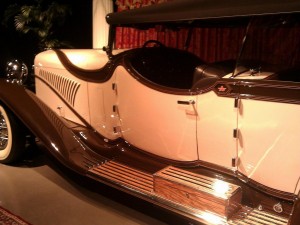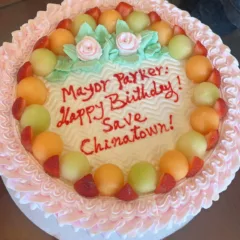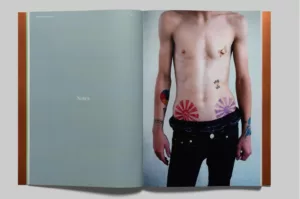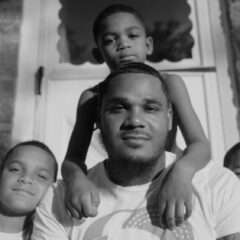If this is Edmonton, I am looking for the art, and my sister-in-law Louise, a landscape artist with lots of skills, is aiding and abetting me. My brother Barry and Murray also come along.
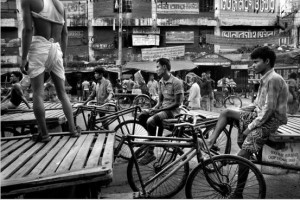
Our first stop is in a most unlikely place–the office of an optometrist named Larry Louie. There we find treasure. The office turns out to to be a gallery with an office attached. The main gallery space is right off the entryway. And more spaces are upstairs. All of them are beautiful white box spaces.
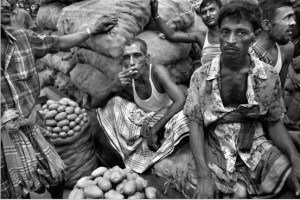
Louie as an ethnographic documentary photographer. His wife, who runs the gallery spaces, said she goes with him on his trips around the world (Turkey, Tanzania, and Tibet for example). Her role in the enterprise is to hang back, watchful, as he befriends people who might not be so welcoming or kind. “I have his back,” she says. Eventually, though, Louie gains enough trust so his subjects allow him to record them with the camera.
The resulting photos, mostly black and white, have velvety darks and luminous lights and midtones. The people in them are compelling. The images do not have the political edge of say Sebastiao Salgado. Rather the message is social without the isms–clear-eyed explorations of people’s lives in context. Louie has a sympathetic eye, at the same time that his photos record the harsh realities.
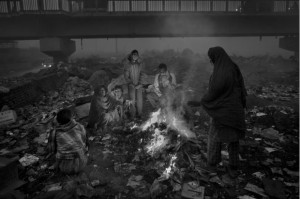
One of the images reminds me off Jeff Wall’s posed images of people living their lives invisibly, under an overpass. Then I decide many of them have that feel–of a nether world the middle class never touch, never notice.
The group shots have the gravitas of history paintings, hugely ambitious in their sweeping descriptions of people’s lives, Louie’s exquisite management of details filling the picture frame.
Louie does dodge and burn his images in PhotoShop. The resulting images have won Louie awards including the IPA Lucie Award and National Geographic Photo Essay Award. He had a solo show at the Royal Alberta Museum in Edmonton in 2010 and has shown in the UK and Spain as well as around the US. Louie also supports SEVA Canada and its Vision 2020, a global initiative for the elimination of avoidable blindness, and the battle for gender equality in eye care. His photos also document some of the group’s work and have that same passion for people and social issues.
After that beginning, the other galleries we visited are a bit of a comedown. We walk down empty streets, and the August art scene there is a bit scaled back, just like everywhere else.
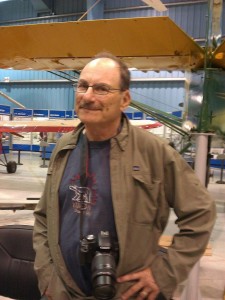
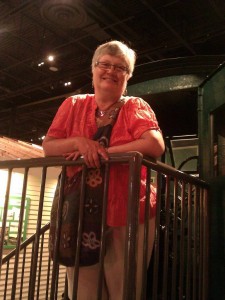
Fortunately Edmonton has other charms–besides of course Barry and Louise, who live in a large suburban house, the back wall of windows overlooking a large park area. Interestingly enough, this suburban house is a twin, really, but the partner house falls away thanks to some smart design. I don’t really understand the thinking. Is it for heat retention? Nah. They like burning oil in Edmonton, where oil is king–oil from the ground and Canola oil.
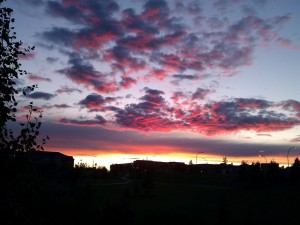
The house’s surrounding land is minimal, which strikes me as funny in a place that has so much land to burn; even the McMansions in the development (and there are some horrifyingly large ones) have minimal land. But Barry and Louise’s place looks out on communal park land. Nice view, nice place to walk.
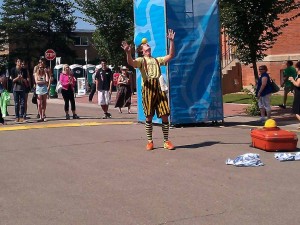
Another charm in Edmonton is the Fringe. Edmonton was the first North American city to host a Fringe Festival, and it seems as if all Edmontonians come out for it. We certainly did, going to four plays, five performances.
The highlight was The Surprise, a funny, sad monologue by a guy from New York named Martin Dockery, who tells about how his family has a don’t ask don’t tell policy of non-relating. Dockery tells all, fortunately, as he tells on his father, his girlfriend and of course himself! If you see his name somewhere, buy tickets.
The Fringe up there gets good newspaper coverage, with a daily growing list of performances ranked via a ranking system that’s really helpful in making choices. The Edmonton Journal must deploy a huge posse of of people to help them sort through the volume of shows.
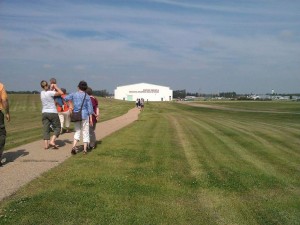
The show wasn’t the only surprise of the trip. Another was the Reynolds-Alberta Museum with its rehabbed Model T, Duesenberg and an array of cars and planes you never heard of.
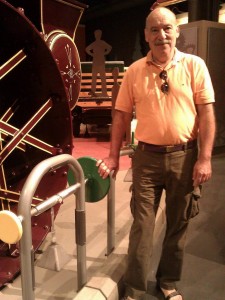
The museum crops up like a giant airplane hangar in the middle of the ultra-flat prairie fields in the town of Wetaskiwin. It is the outgrowth of a private collection–one man’s passion for collecting machines. Picture him running around from farm to farm, taking off people’s hands their old rusting vehicles, parked in the back 40 (sort of like my old printers, scanners and VCR–call me up if you’re interested in these). Reynolds is still alive and still collecting–and donating to the museum.
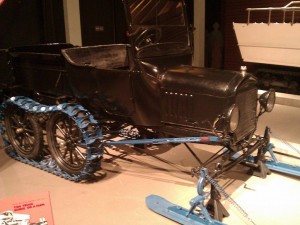
The highlight for me–well there are numerous ones. Here’s my short list:
- The grain elevator gizmos. Now I get it! I never before understood how they worked

A restored Duesenberg is a thing of beauty. There were also cars we’d never heard of–a Winton for instance? .
- The retrofitted cars with skis instead of wheels and other redesigns by farmers and others who needed their car to work in a variety of ways. There were even kits to turn cars into flat beds, for instance.
- The way that cars affected how the whole region (and by extension, the whole world) developed and grew. That social history was pretty darned great, with cars affecting the culture and the culture affecting the cars.
- The interaction between social class interacted with car history.
My brother is like a pig in shit in this museum. He loves cars. He takes me for a ride in his little sports car, an old Honda sports car in mint condition, top down. I hang on for dear life, although the prairies don’t exactly offer much by way of curvy corniche roads to dazzle me with. Louise does not like the sports car. She likes her Element. They also share an Explorer, which also likes burning through fuel.
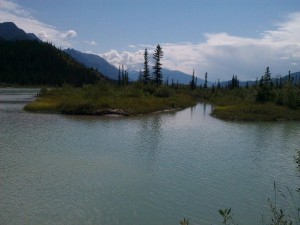
Murray and I begin the vacation driving the Explorer into Jasper. The fuel costs us an astonishing amount of money. (Well, we do drive a Prius in real life, so we’re spoiled). We’ve been to Jasper before. And we find our decision-making brings us to the same places we visited last time we went there–same hotel, Becker’s Chalets, near The Whistlers and same day-hike into Maligne Canyon. It seems insignificant that we’d been there before. The elk in Becker’s parking lot probably are different elk from the last time.
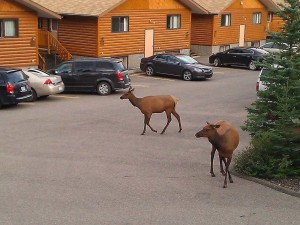
And the canyon cannot grow old. Second to second the water is new. It gushing down the narrow canyon, slows to a swift slide where the canyon widens, and then resumes its whitewater descent.
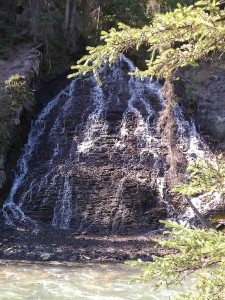
We find something new to us at the Jasper-Yellowhead Museum and archives–an explorer and mapmaker named David Thompson, a native of England whose maps of the Canadian West were both political and geographical wonders, mapping the tribal spheres of influence, the mountains, the rivers. He’s a hero in Canada. We never heard of him of course, in our usual American-centric know-nothing way. I don’t think this was the huge map of his on the wall at the museum, but they did have on loan an original map of his (maybe 8 feet wide) on the wall. I found this one on Thompson’s Wikipedia page, which states, “Thompson’s 1814 map, his greatest achievement, was so accurate that 100 years later it was still the basis for many of the maps issued by the Canadian government. It now resides in the Archives of Ontario.”
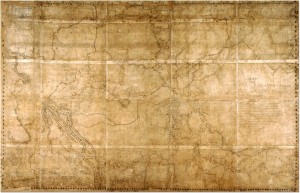
Barry has been taking photographs lately in a very focused sort of way. He snaps and then he photoshops–he has taken some courses and says he still has a long way to go in knowing all the things he can do. But some of his results are swell. He’s still in the playing/learning phase. He gives me a photo (of me); Louise gives me one of her paintings! Lucky me. And soon they will be in Philadelphia for Alex’s wedding!
Thanks to Barry and Louise for great cooking, great company and great love. And to Hani for the fire pit visit!


